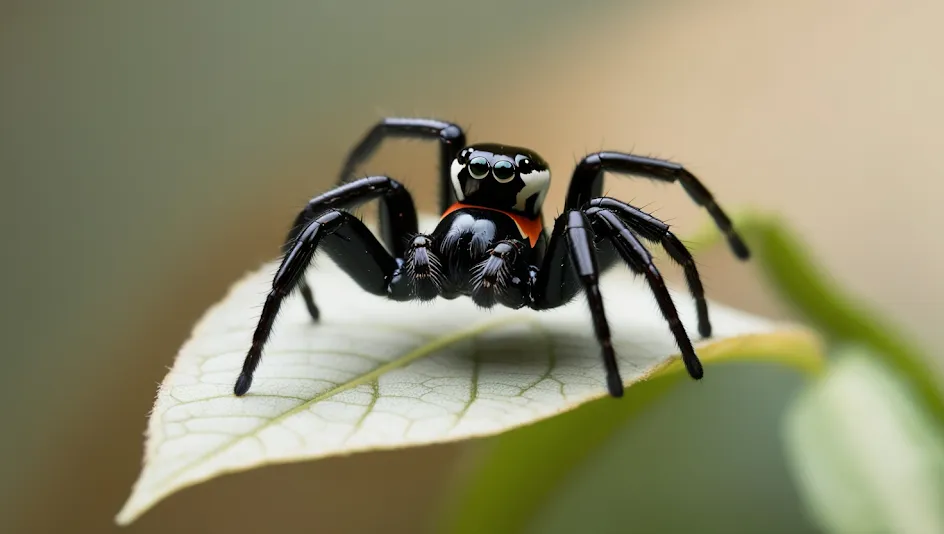Jumping spiders are fascinating little creatures that have won the hearts of many exotic pet enthusiasts. Their curious nature, vibrant colors, and low-maintenance lifestyle make them an appealing choice for both seasoned and first-time pet owners. But how much does it cost to bring one of these tiny adventurers into your home?
My recommendation for the best enclosure: Click here
Table of Contents
- What is the Average Cost of a Jumping Spider?
- Factors Influencing the Cost of Jumping Spiders
- Where Can You Buy Jumping Spiders?
- Additional Costs to Consider
- Are Jumping Spiders Worth the Cost?
- Conclusion
- FAQs
This guide dives into the cost of owning a jumping spider, including the purchase price, factors influencing the cost, additional expenses, and tips on where to buy jumping spiders.
What is the Average Cost of a Jumping Spider?
The cost of a jumping spider depends on several factors, including the species, age, and whether it’s wild-caught or captive-bred. Below is an overview of common species and their average price ranges:
| Species | Price Range (USD) | Notes |
|---|---|---|
| Bold Jumping Spider (Phidippus audax) | $10–$35 | Easily found, suitable for beginners. |
| Regal Jumping Spider (Phidippus regius) | $30–$50 | Popular for their vibrant colors and larger size. |
| Zebra Jumping Spider (Salticus scenicus) | $35–$65 | Small and commonly found in the wild. |
| Rare or Exotic Species | $40–$100+ | Includes brightly colored or uncommon varieties. |
While basic species like the zebra jumping spider are highly affordable, rare or designer spiders can cost significantly more.
Wild-Caught vs. Captive-Bred Spiders
Another factor that affects the cost is whether the spider is wild-caught or captive-bred:
- Wild-Caught Spiders: Typically $20–$50. However, they might not adapt well to captivity and could harbor parasites.
- Captive-Bred Spiders: Often $30–$80. These spiders are healthier, accustomed to being handled, and more ethical to purchase.
Factors Influencing the Cost of Jumping Spiders
1. Species Rarity:
Rare species or those with unusual patterns and vibrant colors can be more expensive.2. Age and Size:
- Juveniles: Cheaper but require time and care to grow.
- Adults: More expensive, but ready to breed or show off their full coloration.
3. Health and Condition:
Healthy spiders with active behaviors and no physical defects fetch higher prices.4. Geographical Availability:
Prices vary depending on your location and access to breeders or pet stores.Where Can You Buy Jumping Spiders?
Jumping spiders can be purchased from various sources. Each has its pros and cons:
| Source | Pros | Cons |
|---|---|---|
| Online Platforms | Wide variety, convenient shipping options. | Shipping can be stressful for the spider. |
| Local Pet Stores | Immediate purchase, inspect the spider. | Limited species available. |
| Exotic Pet Expos | Meet breeders, get expert advice. | Limited events and locations. |
Popular online marketplaces for jumping spiders include:
- Etsy: Known for offering exotic pets like jumping spiders.
- Specialized Breeders: Websites dedicated to arachnids, ensuring healthy captive-bred spiders.
Additional Costs to Consider
While jumping spiders themselves are affordable, there are other costs to consider for their care and maintenance:
1. Housing and Enclosure
| Item | Cost (USD) | Details |
|---|---|---|
| Terrarium/Enclosure | $15–$50 | Ventilated containers or specialized terrariums. |
| Substrate | $5–$15 | Coconut fiber, sphagnum moss, or eco-friendly bedding. |
| Decorations (Climbers, Plants) | $10–$30 | Helps mimic their natural habitat. |
2. Food and Feeding Costs
Jumping spiders eat live prey, which is both an essential and ongoing cost:
- Diet: Small insects like fruit flies, crickets, and mealworms.
- Monthly Feeding Costs: $5–$20, depending on the spider’s size and appetite.
3. Maintenance Tools and Supplies
- Cleaning Tools: $5–$10 for small brushes or tweezers.
- Replacement Costs: Substrate and decorations may need annual replacement, costing $10–$20.
Are Jumping Spiders Worth the Cost?
Owning a jumping spider is a rewarding experience for many reasons:
- Low Maintenance: Minimal space and care requirements.
- Affordable: Both the initial and ongoing costs are budget-friendly compared to other exotic pets.
- Educational Value: They offer a fascinating glimpse into the world of invertebrates.
- Emotional Benefits: Observing their behaviors and interactions can be calming and entertaining.
Their quirky personalities, playful behaviors, and minimal demands make them a favorite among pet owners seeking something unique yet manageable.
Conclusion
Jumping spiders are one of the most affordable and rewarding exotic pets you can own. With prices ranging from $20 to $100 depending on the species and source, they cater to a variety of budgets. When factoring in additional costs like housing and food, they remain a cost-effective choice.
If you’re ready to welcome a tiny, eight-legged companion into your home, a jumping spider could be the perfect match. Explore reputable breeders, invest in a proper setup, and enjoy the fascinating journey of owning one of nature’s most captivating creatures.
FAQs
What is the average cost of a jumping spider?
The average cost ranges from $20 to $50 for common species, but rare or exotic varieties can cost $80 or more.
Are captive-bred jumping spiders better than wild-caught ones?
Yes, captive-bred spiders are generally healthier, more accustomed to handling, and raised ethically.
What are the ongoing costs of owning a jumping spider?
Monthly costs include food ($5–$20) and occasional expenses for substrate or decorations ($20–$30 annually).
Where can I buy a jumping spider?
You can purchase them online from breeders, at exotic pet expos, or in select local pet stores.
Are jumping spiders good pets for beginners?
Yes, they are low-maintenance, affordable, and fascinating, making them an excellent choice for first-time exotic pet owners.










0 Comments